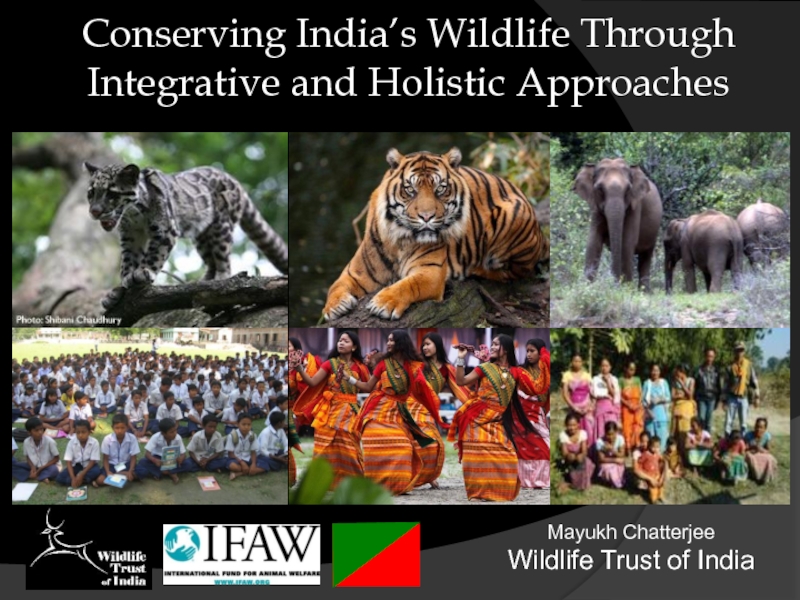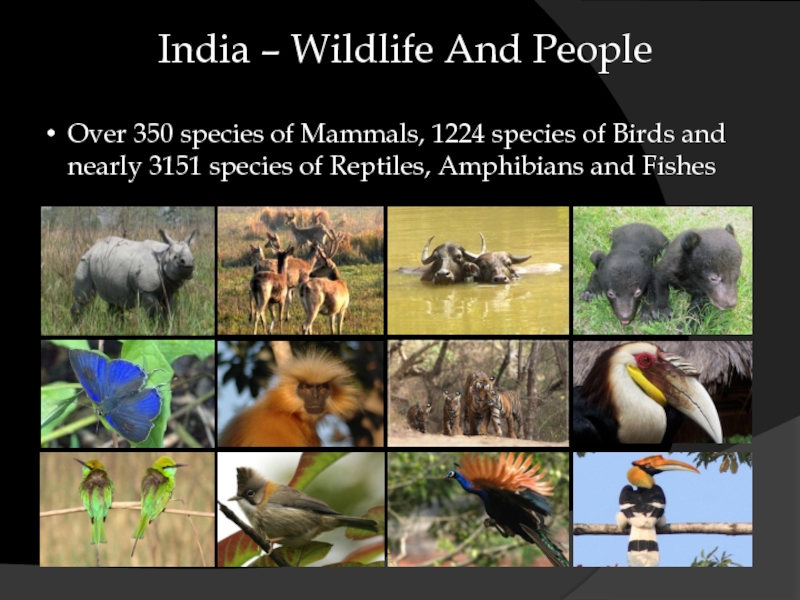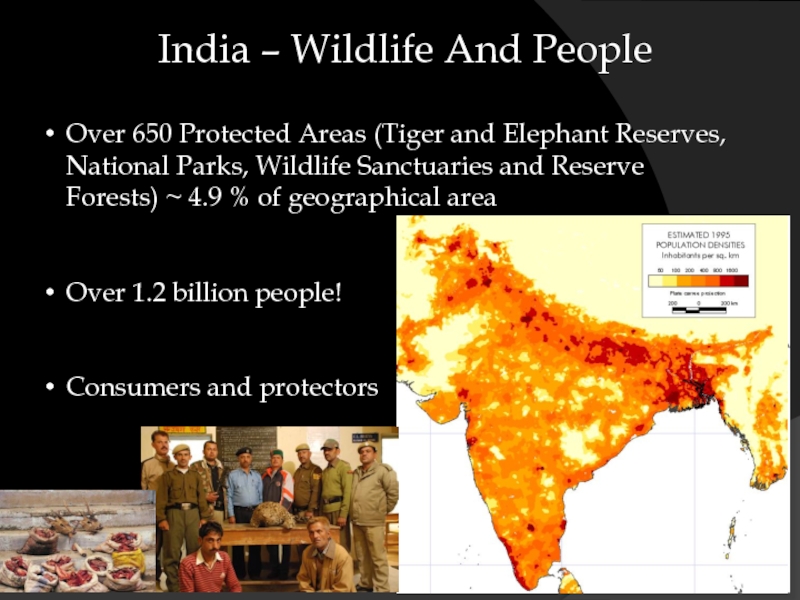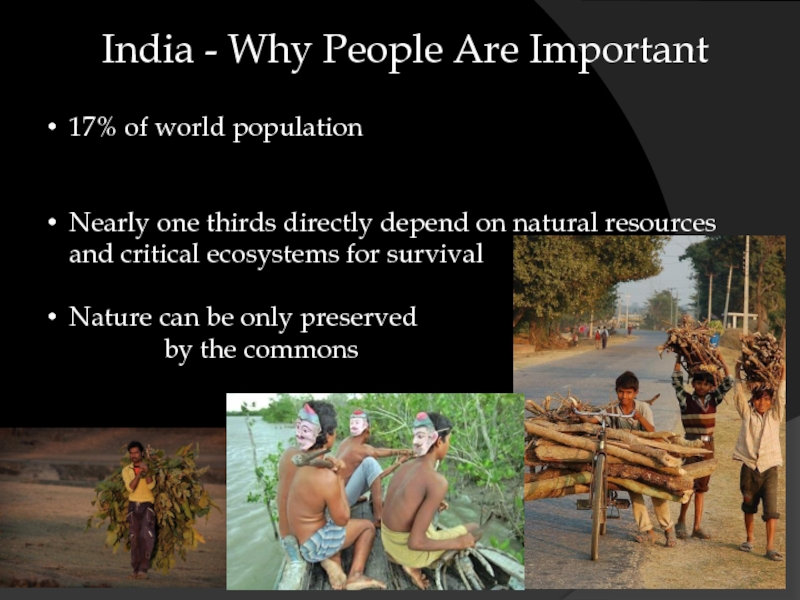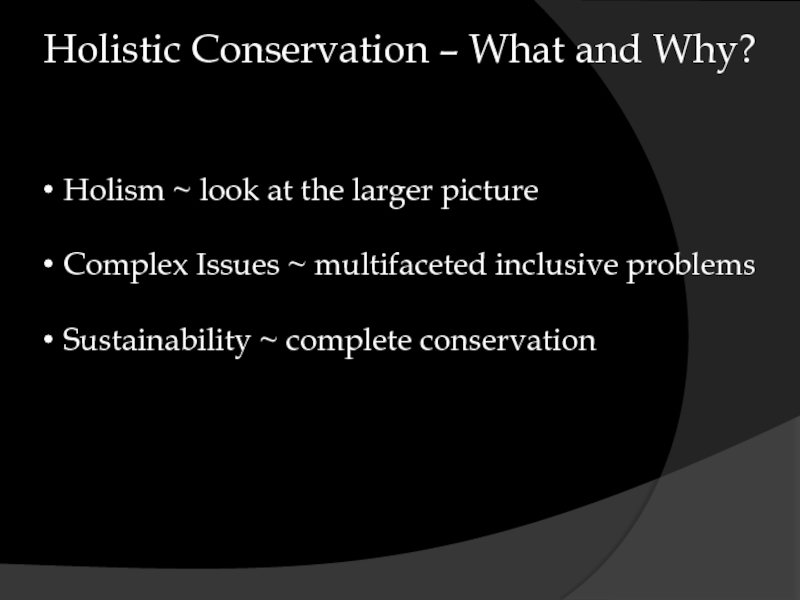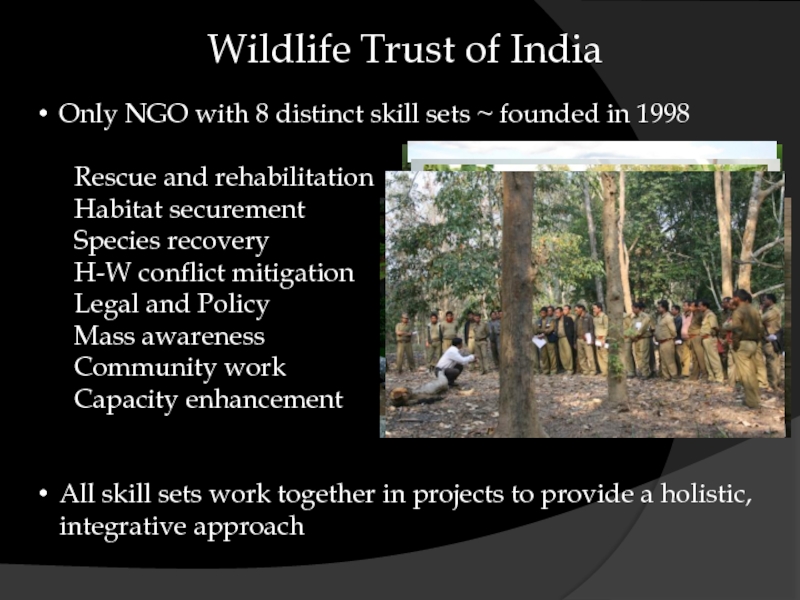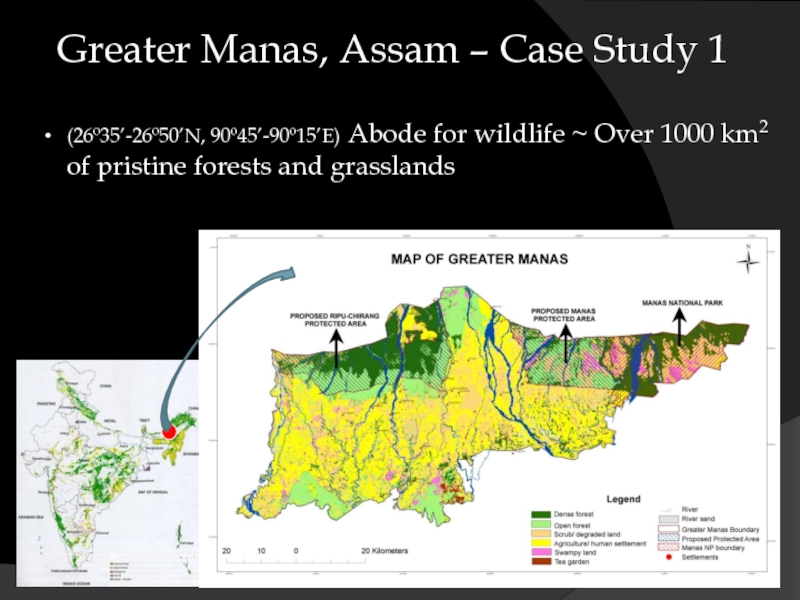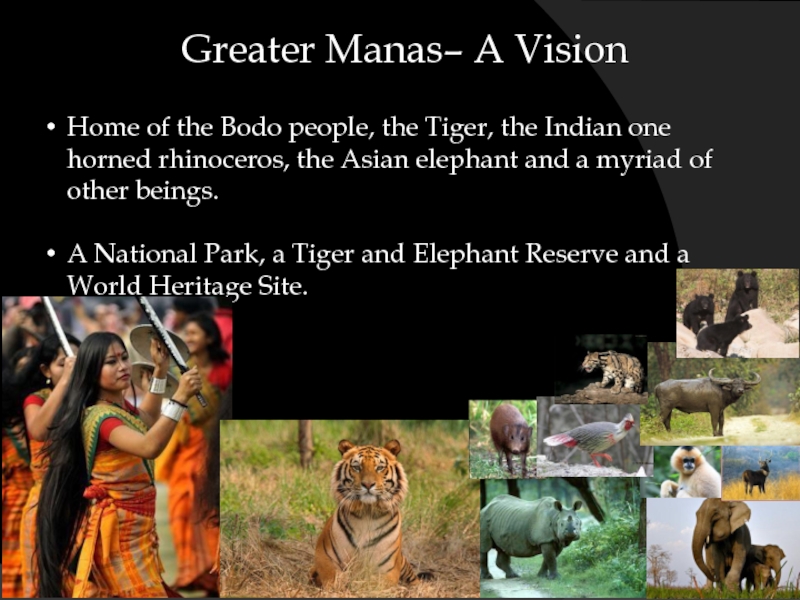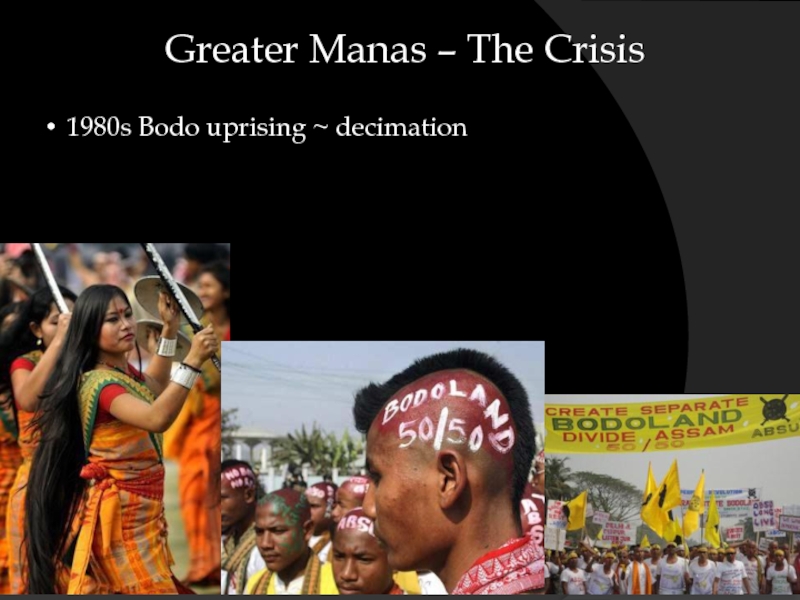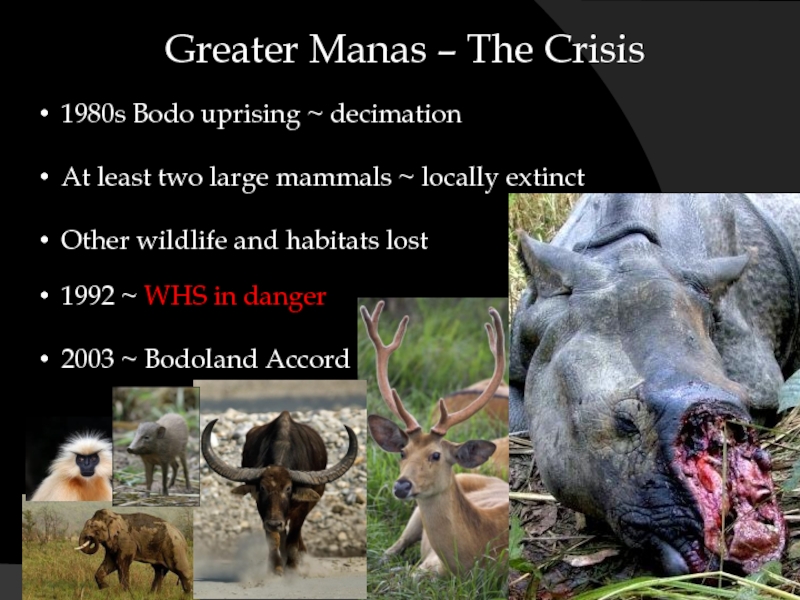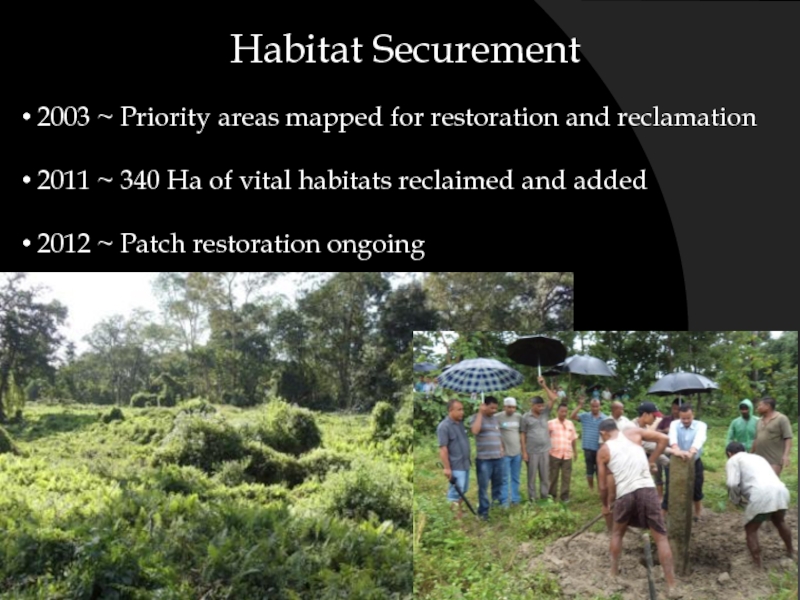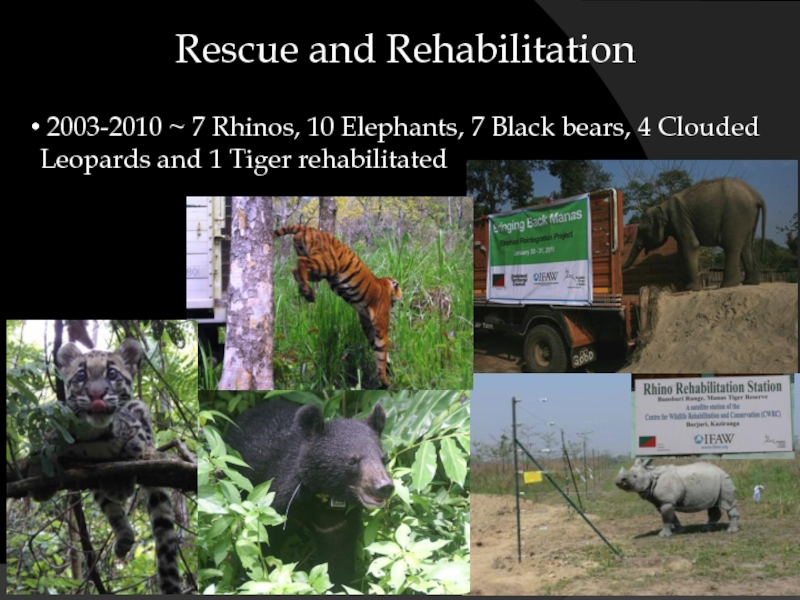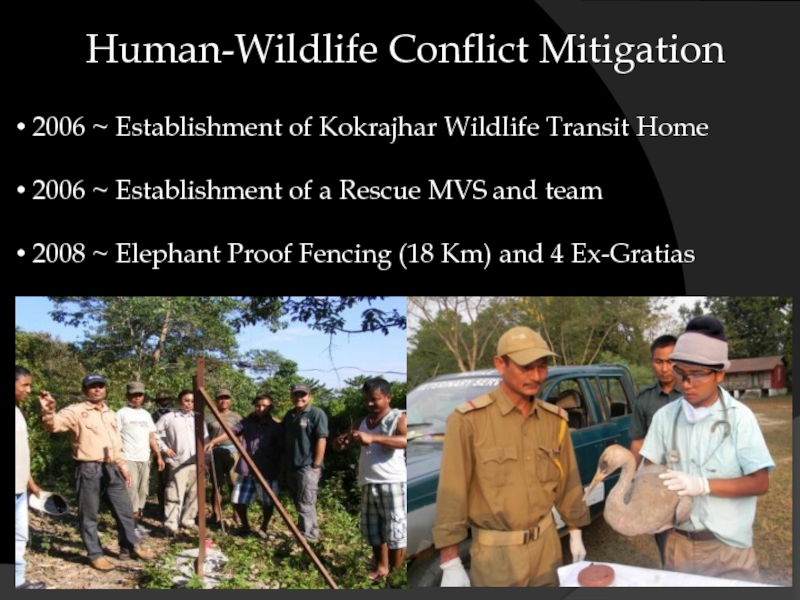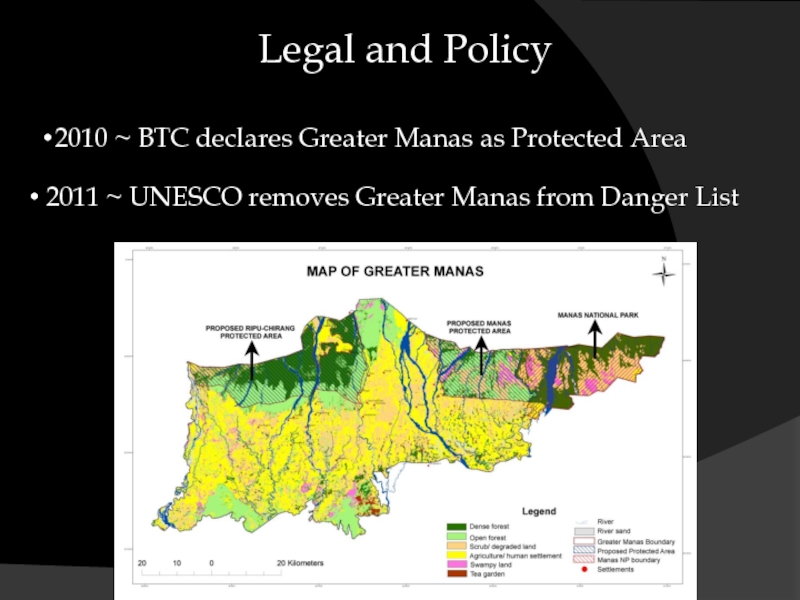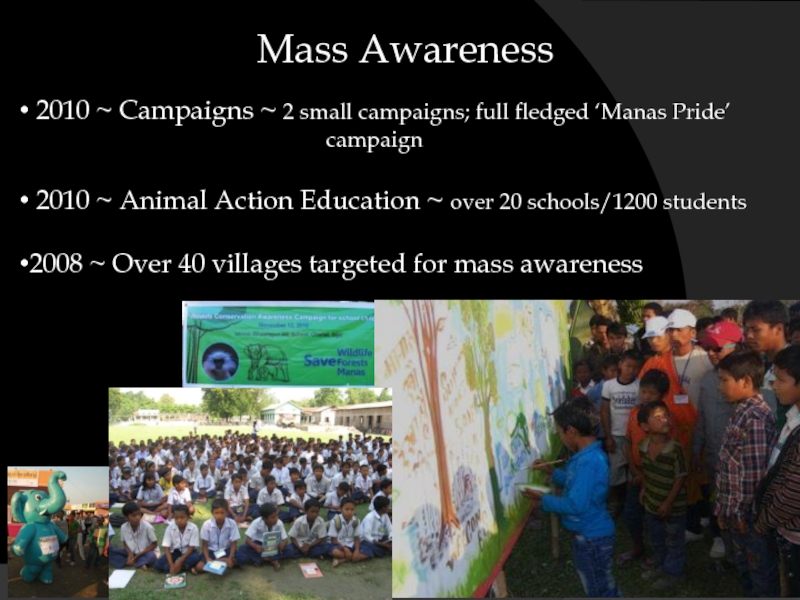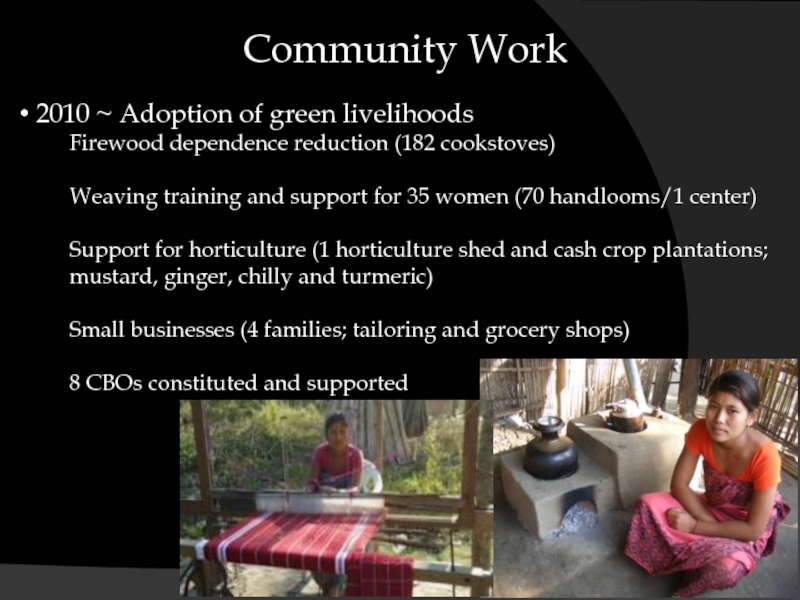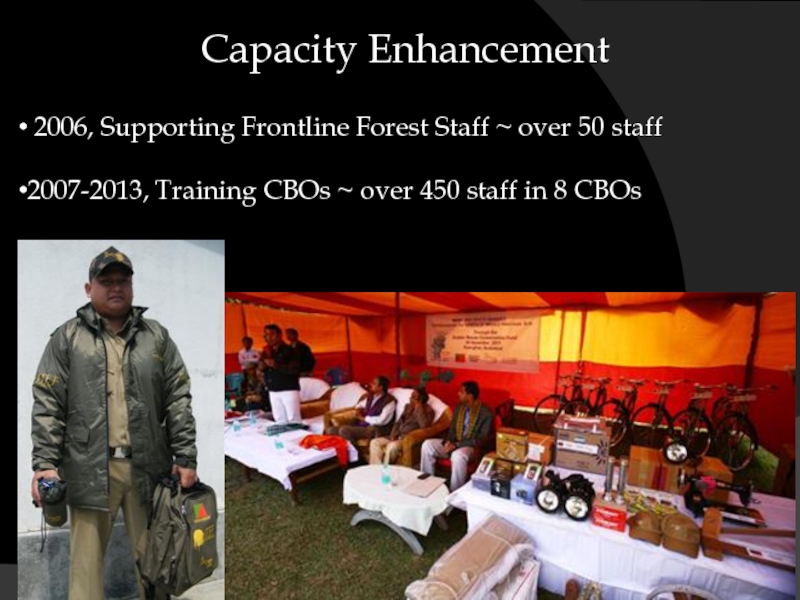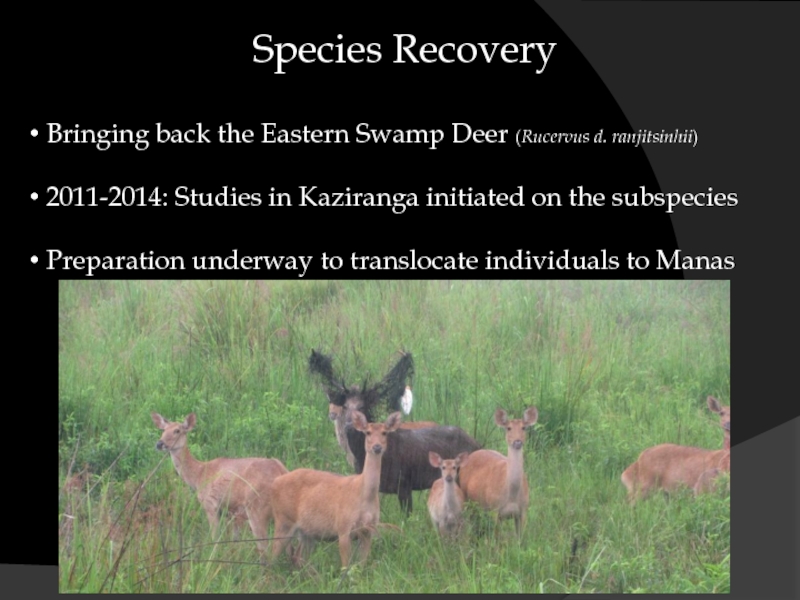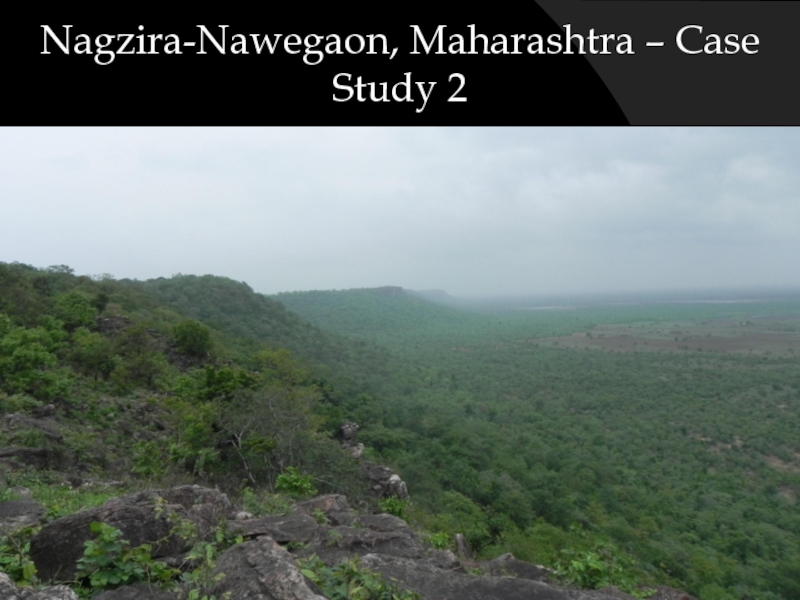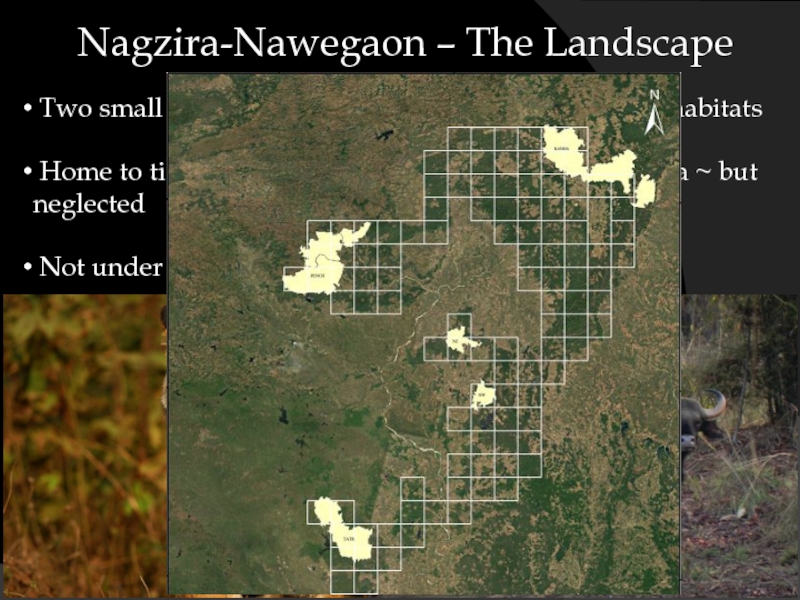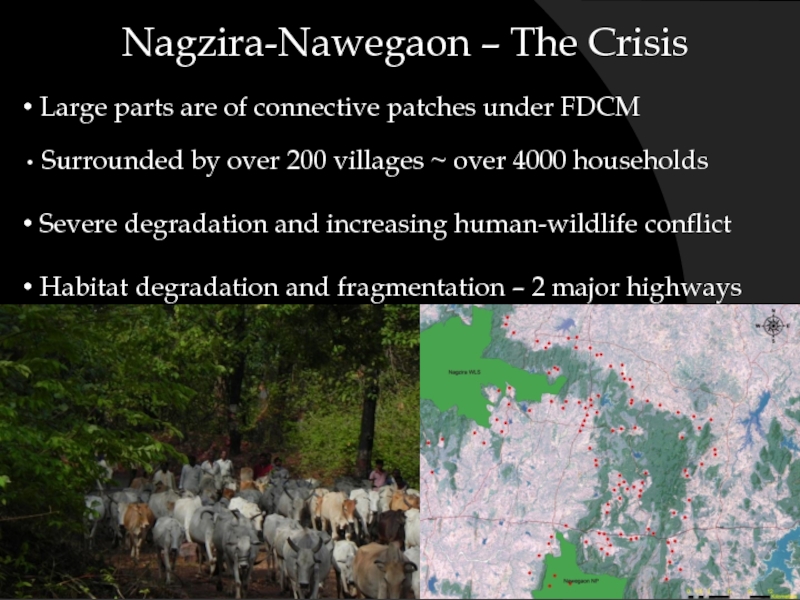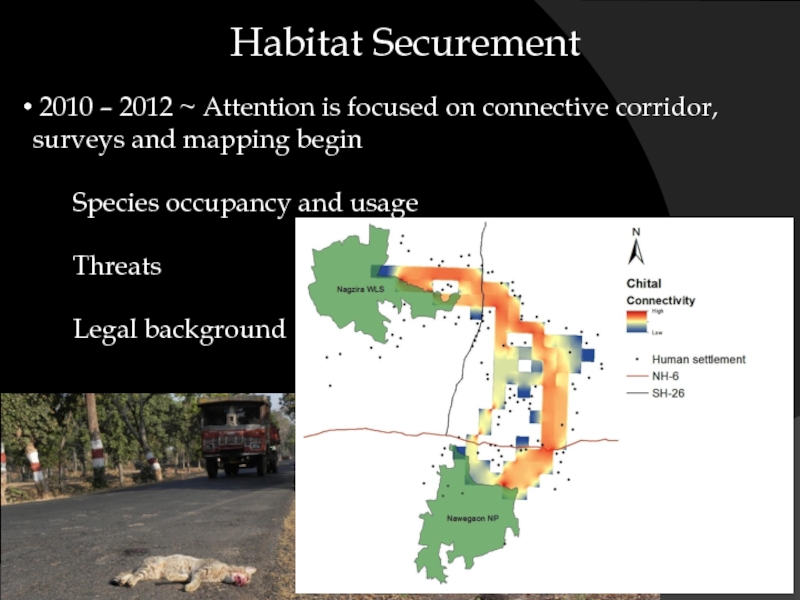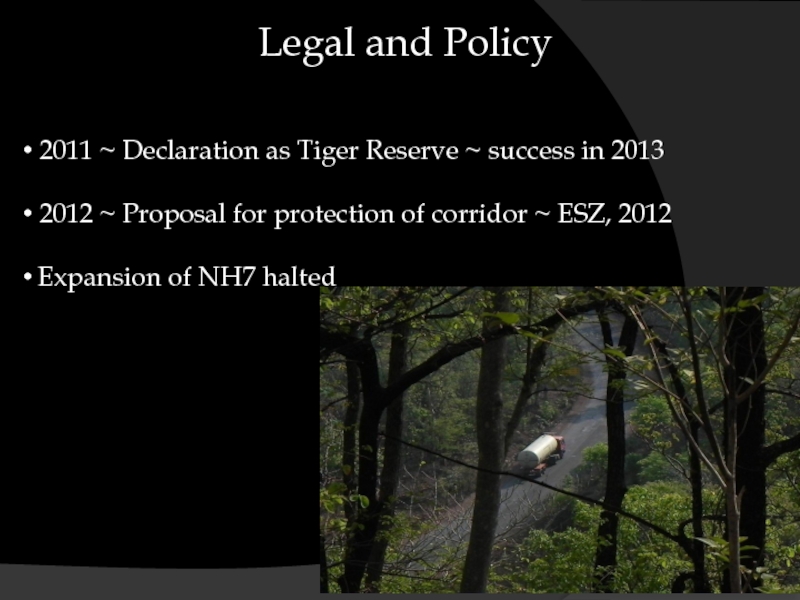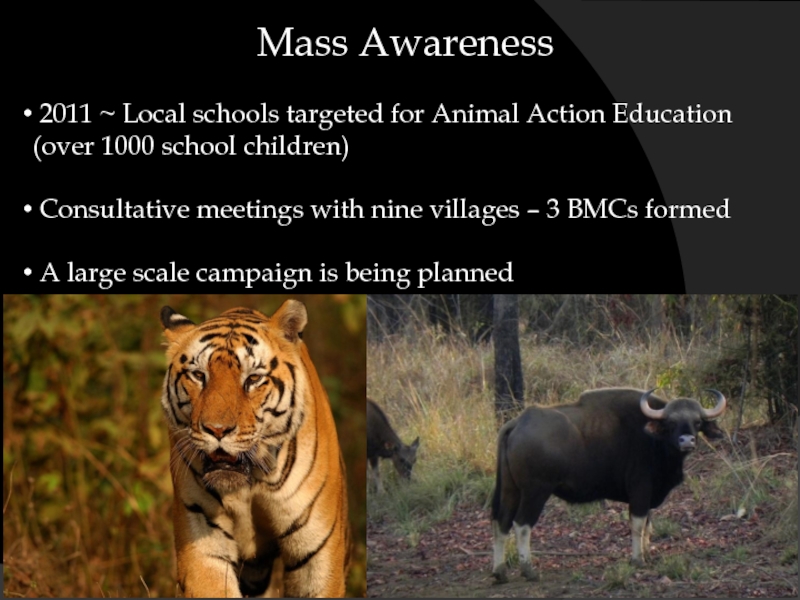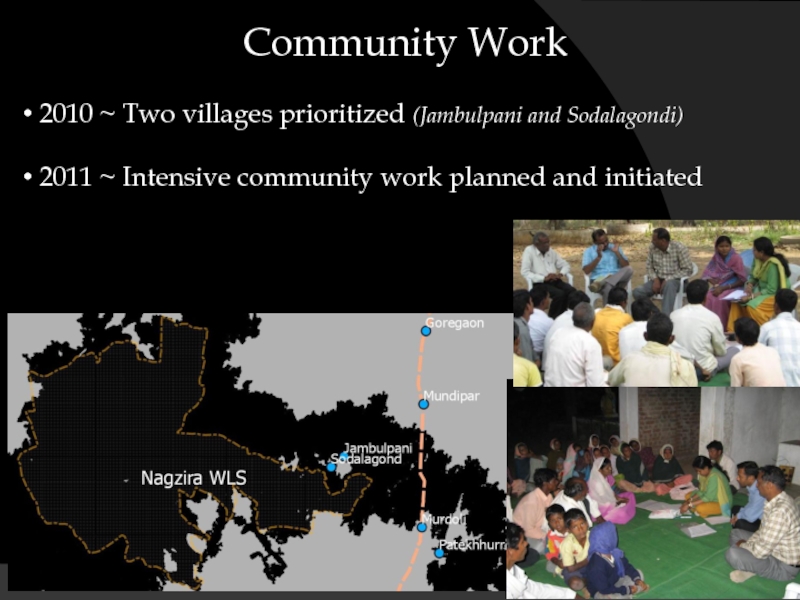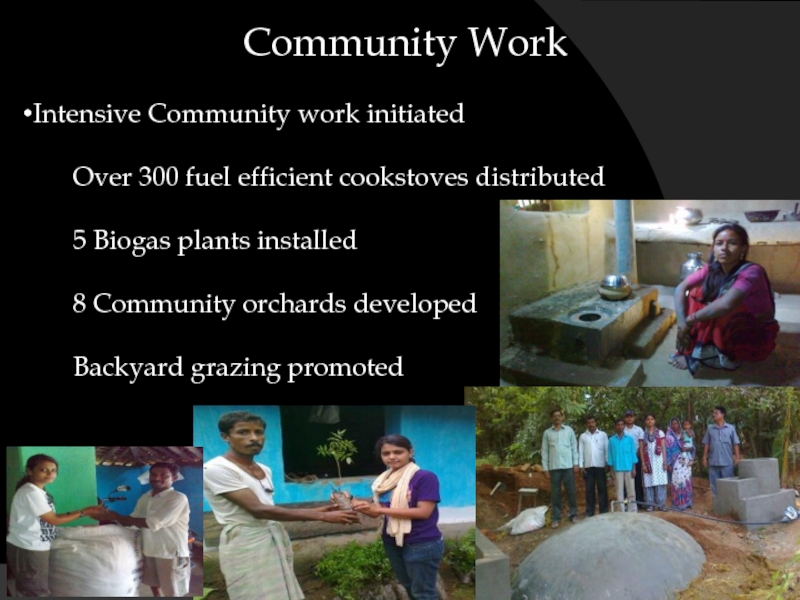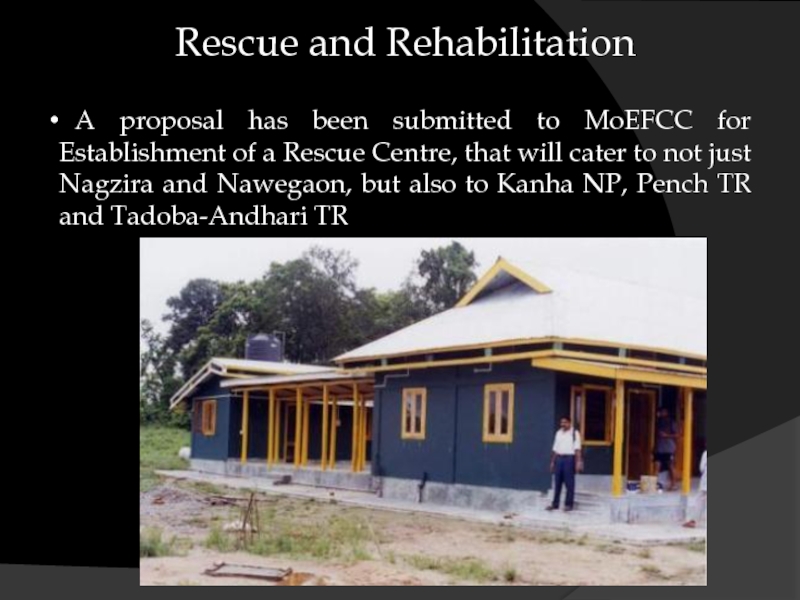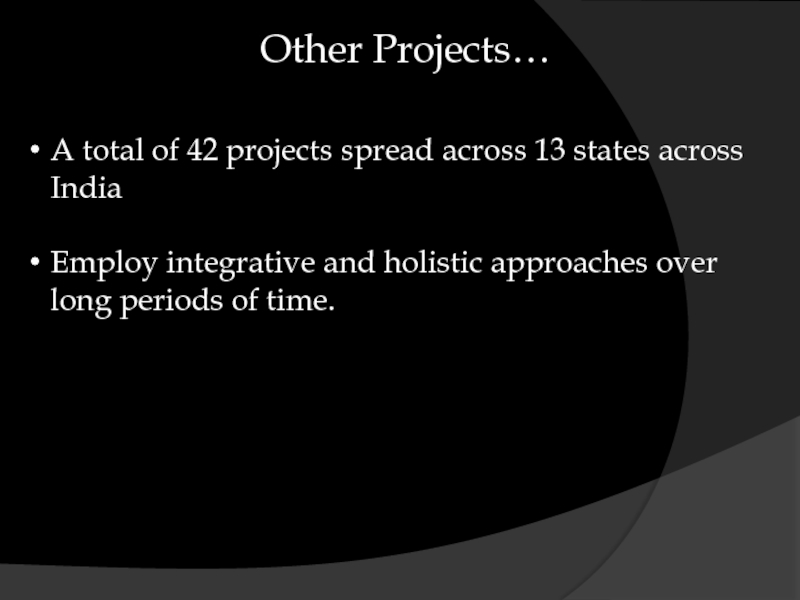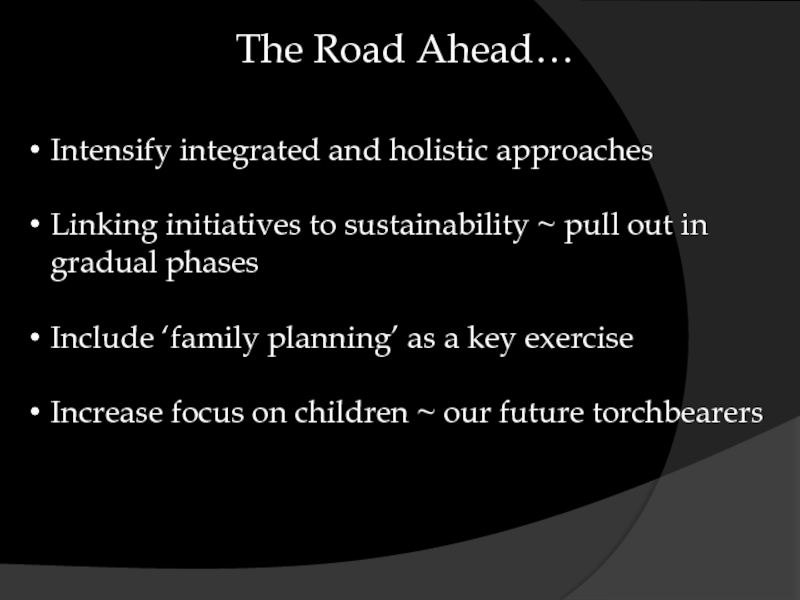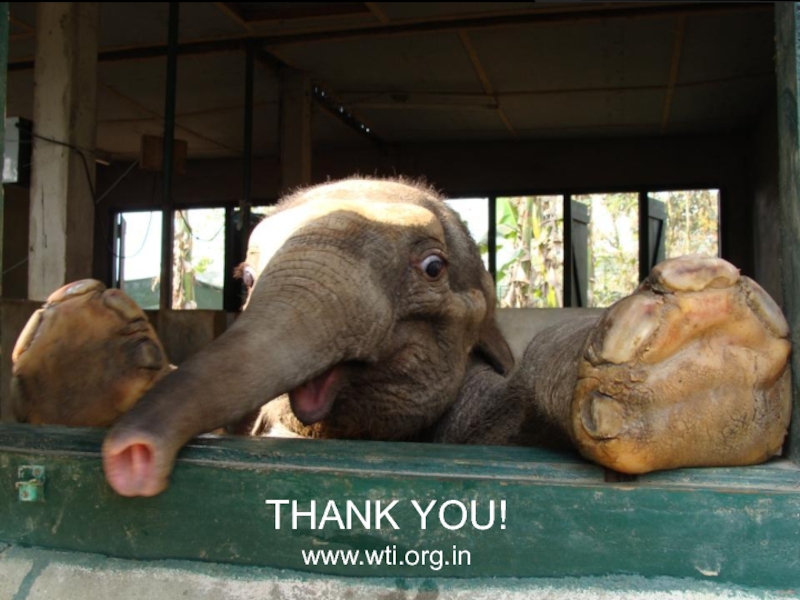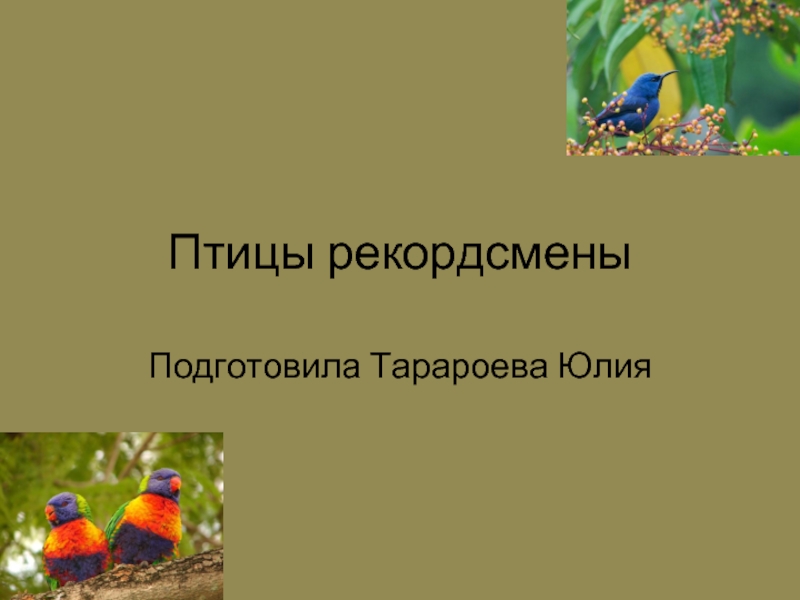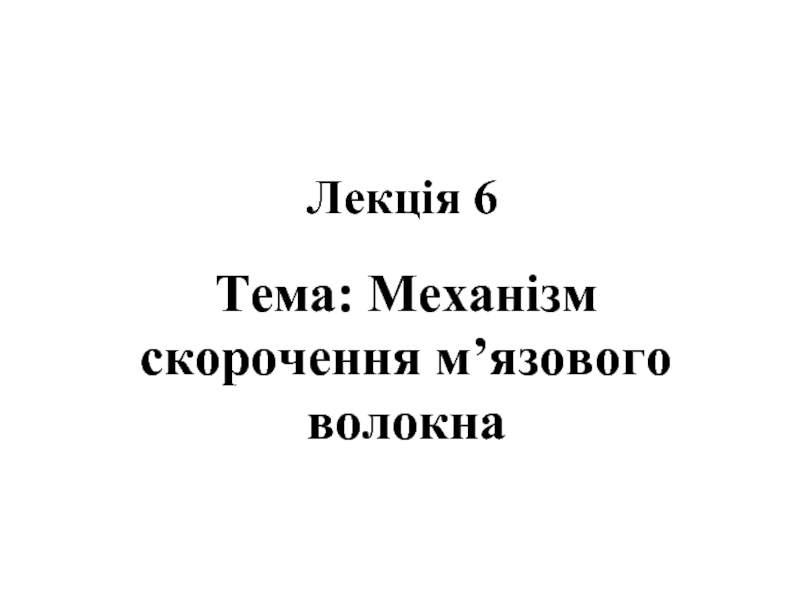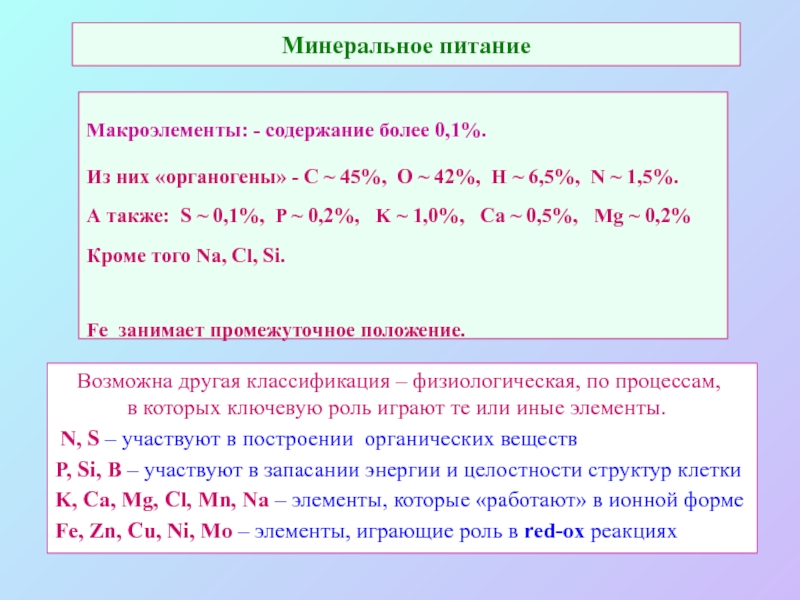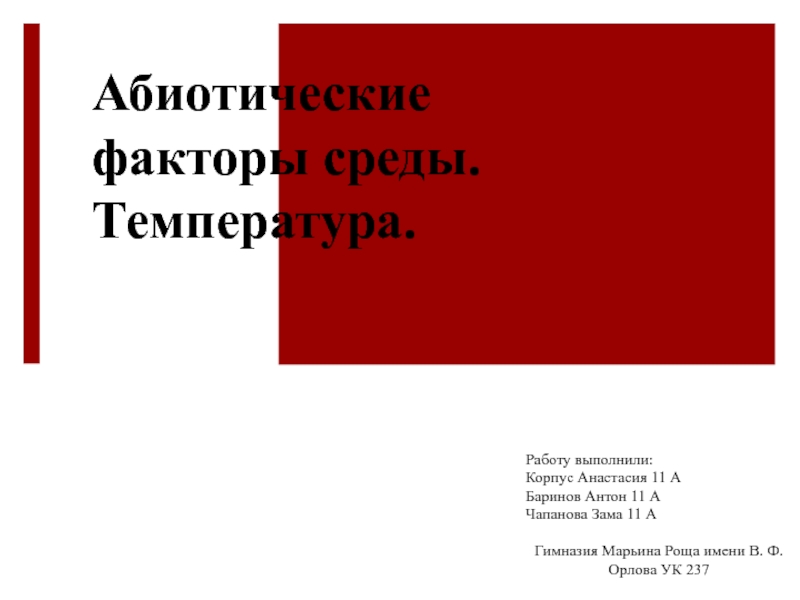India
- Главная
- Разное
- Дизайн
- Бизнес и предпринимательство
- Аналитика
- Образование
- Развлечения
- Красота и здоровье
- Финансы
- Государство
- Путешествия
- Спорт
- Недвижимость
- Армия
- Графика
- Культурология
- Еда и кулинария
- Лингвистика
- Английский язык
- Астрономия
- Алгебра
- Биология
- География
- Детские презентации
- Информатика
- История
- Литература
- Маркетинг
- Математика
- Медицина
- Менеджмент
- Музыка
- МХК
- Немецкий язык
- ОБЖ
- Обществознание
- Окружающий мир
- Педагогика
- Русский язык
- Технология
- Физика
- Философия
- Химия
- Шаблоны, картинки для презентаций
- Экология
- Экономика
- Юриспруденция
Conserving India’s Wildlife Through Integrative and Holistic Approaches презентация
Содержание
- 1. Conserving India’s Wildlife Through Integrative and Holistic Approaches
- 2. India – Wildlife And People Over 350
- 3. India – Wildlife And People Over 650
- 4. India - Why People Are Important 17%
- 5. India - Why People Are Important Traditional
- 6. Holistic Conservation – What and Why? Holism
- 7. Integrated Conservation – What and Why? Integrated
- 8. Wildlife Trust of India Only NGO with
- 9. Two Case Studies
- 10. Greater Manas, Assam – Case Study 1
- 11. Greater Manas– A Vision Home of the
- 12. Greater Manas – The Crisis 1980s Bodo uprising ~ decimation
- 13. Greater Manas – The Crisis 1980s Bodo
- 14. Habitat Securement 2003 ~ Priority areas
- 15. Rescue and Rehabilitation 2003-2010 ~ 7
- 16. Human-Wildlife Conflict Mitigation 2006 ~ Establishment
- 17. Legal and Policy 2010 ~ BTC declares
- 18. Mass Awareness 2010 ~ Campaigns ~
- 19. Community Work 2010 ~ Adoption of
- 20. Capacity Enhancement 2006, Supporting Frontline Forest
- 21. Species Recovery Bringing back the Eastern
- 22. Nagzira-Nawegaon, Maharashtra – Case Study 2
- 23. Nagzira-Nawegaon – The Landscape Two small
- 24. Nagzira-Nawegaon – The Crisis Large parts
- 25. Habitat Securement 2010 – 2012 ~
- 26. Legal and Policy 2011 ~ Declaration
- 27. Mass Awareness 2011 ~ Local schools
- 28. Community Work 2010 ~ Two villages
- 29. Community Work Intensive Community work initiated
- 30. Capacity Enhancement Over 230 Frontline Forest
- 31. Conflict Mitigation 2012 ~ 2 km
- 32. Rescue and Rehabilitation A proposal has
- 33. Other Projects… Western Himalayas Mountain Ungulates
- 34. Other Projects… A total of 42 projects
- 35. The Road Ahead… Intensify integrated and holistic
- 36. THANK YOU! www.wti.org.in
Слайд 1Conserving India’s Wildlife Through Integrative and Holistic Approaches
Mayukh Chatterjee
Wildlife Trust of
Слайд 2India – Wildlife And People
Over 350 species of Mammals, 1224 species
of Birds and nearly 3151 species of Reptiles, Amphibians and Fishes
Слайд 3India – Wildlife And People
Over 650 Protected Areas (Tiger and Elephant
Reserves, National Parks, Wildlife Sanctuaries and Reserve Forests) ~ 4.9 % of geographical area
Over 1.2 billion people!
Consumers and protectors
Over 1.2 billion people!
Consumers and protectors
Слайд 4India - Why People Are Important
17% of world population
Nearly one thirds
directly depend on natural resources and critical ecosystems for survival
Nature can be only preserved
by the commons
Nature can be only preserved
by the commons
Слайд 5India - Why People Are Important
Traditional preservationists
Need vs. Greed ~ changing
fast!
Wildlife and Nature ~ back seat
Wildlife and Nature ~ back seat
Слайд 6Holistic Conservation – What and Why?
Holism ~ look at the larger
picture
Complex Issues ~ multifaceted inclusive problems
Sustainability ~ complete conservation
Complex Issues ~ multifaceted inclusive problems
Sustainability ~ complete conservation
Слайд 7Integrated Conservation – What and Why?
Integrated Conservation?
Communities are major stakeholders
Unethical ~
one’s fancy are another’s predicament
Exclusion is a failure
No sustainability without integrated conservation
Exclusion is a failure
No sustainability without integrated conservation
Слайд 8Wildlife Trust of India
Only NGO with 8 distinct skill sets ~
founded in 1998
Rescue and rehabilitation
Habitat securement
Species recovery
H-W conflict mitigation
Legal and Policy
Mass awareness
Community work
Capacity enhancement
All skill sets work together in projects to provide a holistic, integrative approach
Rescue and rehabilitation
Habitat securement
Species recovery
H-W conflict mitigation
Legal and Policy
Mass awareness
Community work
Capacity enhancement
All skill sets work together in projects to provide a holistic, integrative approach
Слайд 10Greater Manas, Assam – Case Study 1
(26º35’-26º50’N, 90º45’-90º15’E) Abode for wildlife
~ Over 1000 km2 of pristine forests and grasslands
Слайд 11Greater Manas– A Vision
Home of the Bodo people, the Tiger, the
Indian one horned rhinoceros, the Asian elephant and a myriad of other beings.
A National Park, a Tiger and Elephant Reserve and a World Heritage Site.
A National Park, a Tiger and Elephant Reserve and a World Heritage Site.
Слайд 13Greater Manas – The Crisis
1980s Bodo uprising ~ decimation
At least two
large mammals ~ locally extinct
Other wildlife and habitats lost
1992 ~ WHS in danger
2003 ~ Bodoland Accord
Other wildlife and habitats lost
1992 ~ WHS in danger
2003 ~ Bodoland Accord
Слайд 14Habitat Securement
2003 ~ Priority areas mapped for restoration and reclamation
2011 ~ 340 Ha of vital habitats reclaimed and added
2012 ~ Patch restoration ongoing
2012 ~ Patch restoration ongoing
Слайд 15Rescue and Rehabilitation
2003-2010 ~ 7 Rhinos, 10 Elephants, 7 Black
bears, 4 Clouded Leopards and 1 Tiger rehabilitated
Слайд 16Human-Wildlife Conflict Mitigation
2006 ~ Establishment of Kokrajhar Wildlife Transit Home
2006 ~ Establishment of a Rescue MVS and team
2008 ~ Elephant Proof Fencing (18 Km) and 4 Ex-Gratias
2008 ~ Elephant Proof Fencing (18 Km) and 4 Ex-Gratias
Слайд 17Legal and Policy
2010 ~ BTC declares Greater Manas as Protected Area
2011 ~ UNESCO removes Greater Manas from Danger List
Слайд 18Mass Awareness
2010 ~ Campaigns ~ 2 small campaigns; full fledged
‘Manas Pride’ campaign
2010 ~ Animal Action Education ~ over 20 schools/1200 students
2008 ~ Over 40 villages targeted for mass awareness
2010 ~ Animal Action Education ~ over 20 schools/1200 students
2008 ~ Over 40 villages targeted for mass awareness
Слайд 19Community Work
2010 ~ Adoption of green livelihoods
Firewood dependence reduction (182
cookstoves)
Weaving training and support for 35 women (70 handlooms/1 center)
Support for horticulture (1 horticulture shed and cash crop plantations; mustard, ginger, chilly and turmeric)
Small businesses (4 families; tailoring and grocery shops)
8 CBOs constituted and supported
Weaving training and support for 35 women (70 handlooms/1 center)
Support for horticulture (1 horticulture shed and cash crop plantations; mustard, ginger, chilly and turmeric)
Small businesses (4 families; tailoring and grocery shops)
8 CBOs constituted and supported
Слайд 20Capacity Enhancement
2006, Supporting Frontline Forest Staff ~ over 50 staff
2007-2013, Training CBOs ~ over 450 staff in 8 CBOs
Слайд 21Species Recovery
Bringing back the Eastern Swamp Deer (Rucervus d. ranjitsinhii)
2011-2014: Studies in Kaziranga initiated on the subspecies
Preparation underway to translocate individuals to Manas
Preparation underway to translocate individuals to Manas
Слайд 23Nagzira-Nawegaon – The Landscape
Two small and disjunct areas ~ connects
3 main tiger habitats
Home to tigers, leopards, Gaur and several other fauna ~ but neglected
Not under stringent protection ~ Wildlife Sanctuaries
Home to tigers, leopards, Gaur and several other fauna ~ but neglected
Not under stringent protection ~ Wildlife Sanctuaries
Слайд 24Nagzira-Nawegaon – The Crisis
Large parts are of connective patches under
FDCM
Surrounded by over 200 villages ~ over 4000 households
Severe degradation and increasing human-wildlife conflict
Habitat degradation and fragmentation – 2 major highways
Surrounded by over 200 villages ~ over 4000 households
Severe degradation and increasing human-wildlife conflict
Habitat degradation and fragmentation – 2 major highways
Слайд 25Habitat Securement
2010 – 2012 ~ Attention is focused on connective
corridor, surveys and mapping begin
Species occupancy and usage
Threats
Legal background
Species occupancy and usage
Threats
Legal background
Слайд 26Legal and Policy
2011 ~ Declaration as Tiger Reserve ~ success
in 2013
2012 ~ Proposal for protection of corridor ~ ESZ, 2012
Expansion of NH7 halted
2012 ~ Proposal for protection of corridor ~ ESZ, 2012
Expansion of NH7 halted
Слайд 27Mass Awareness
2011 ~ Local schools targeted for Animal Action Education
(over 1000 school children)
Consultative meetings with nine villages – 3 BMCs formed
A large scale campaign is being planned
Consultative meetings with nine villages – 3 BMCs formed
A large scale campaign is being planned
Слайд 28Community Work
2010 ~ Two villages prioritized (Jambulpani and Sodalagondi)
2011 ~ Intensive community work planned and initiated
Слайд 29Community Work
Intensive Community work initiated
Over 300 fuel efficient cookstoves distributed
5 Biogas
plants installed
8 Community orchards developed
Backyard grazing promoted
8 Community orchards developed
Backyard grazing promoted
Слайд 30Capacity Enhancement
Over 230 Frontline Forest Staff have been trained, including
reserve forest staff
Over 120 staff have been equipped with patrolling equipment
Anti-Poaching and Conflict Mitigation Training ~ June 2014
Over 120 staff have been equipped with patrolling equipment
Anti-Poaching and Conflict Mitigation Training ~ June 2014
Слайд 31Conflict Mitigation
2012 ~ 2 km long electric fence bordering Jambulpani,
setup
A Protection camp was built and handed over to FD
Water holes on forest fringes are replenished every summer
A Protection camp was built and handed over to FD
Water holes on forest fringes are replenished every summer
Слайд 32Rescue and Rehabilitation
A proposal has been submitted to MoEFCC for
Establishment of a Rescue Centre, that will cater to not just Nagzira and Nawegaon, but also to Kanha NP, Pench TR and Tadoba-Andhari TR
Слайд 33Other Projects…
Western Himalayas Mountain Ungulates
Valmiki Tiger and Gharial Recovery
U.P. Big Cat
Conflict Mitigation
Southern Western Ghats Elephant Corridors
West Coast Marine Project
Garo Green Spine
Southern Western Ghats Elephant Corridors
West Coast Marine Project
Garo Green Spine
Слайд 34Other Projects…
A total of 42 projects spread across 13 states across
India
Employ integrative and holistic approaches over long periods of time.
Employ integrative and holistic approaches over long periods of time.
Слайд 35The Road Ahead…
Intensify integrated and holistic approaches
Linking initiatives to sustainability
~ pull out in gradual phases
Include ‘family planning’ as a key exercise
Increase focus on children ~ our future torchbearers
Include ‘family planning’ as a key exercise
Increase focus on children ~ our future torchbearers
